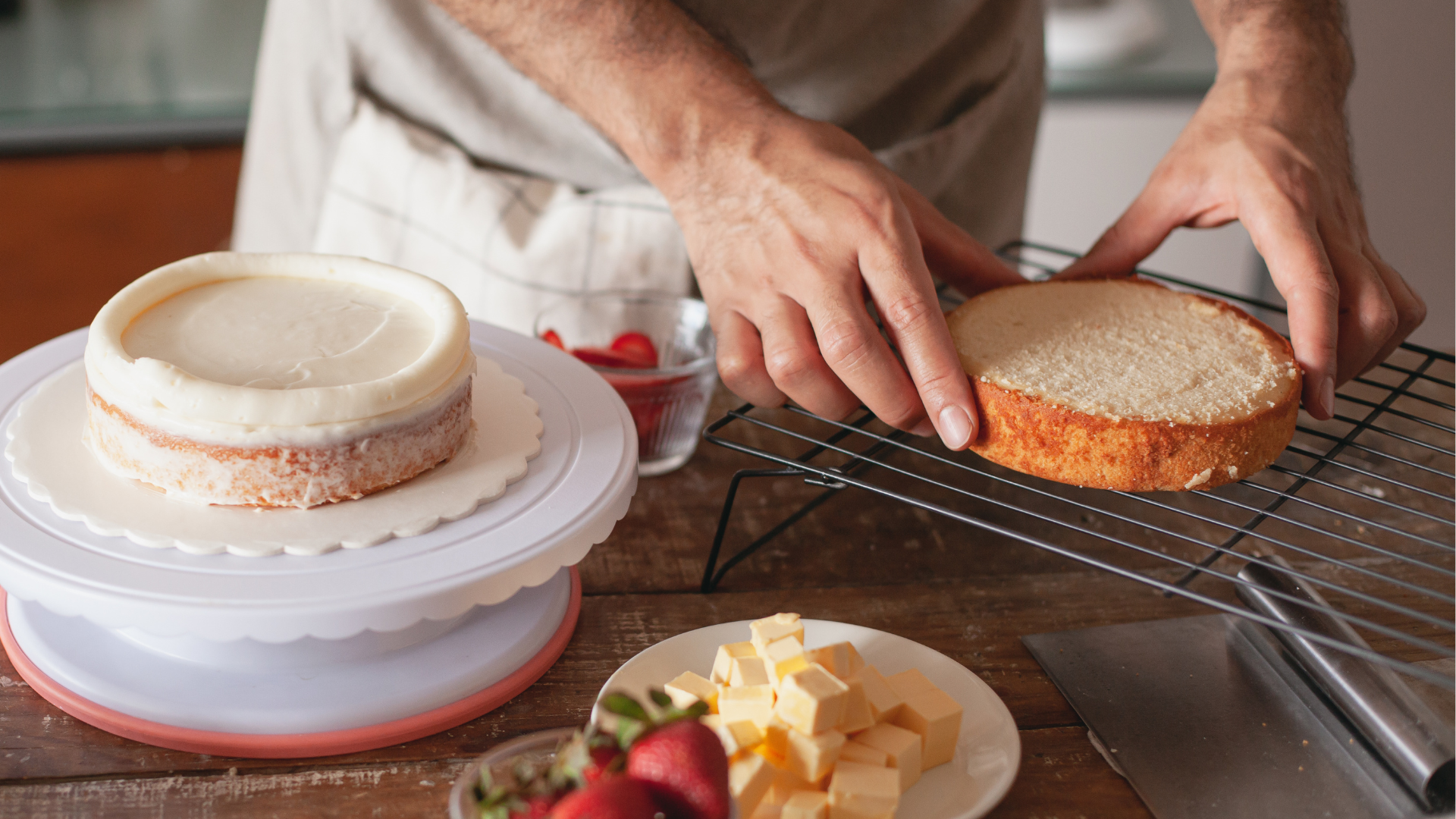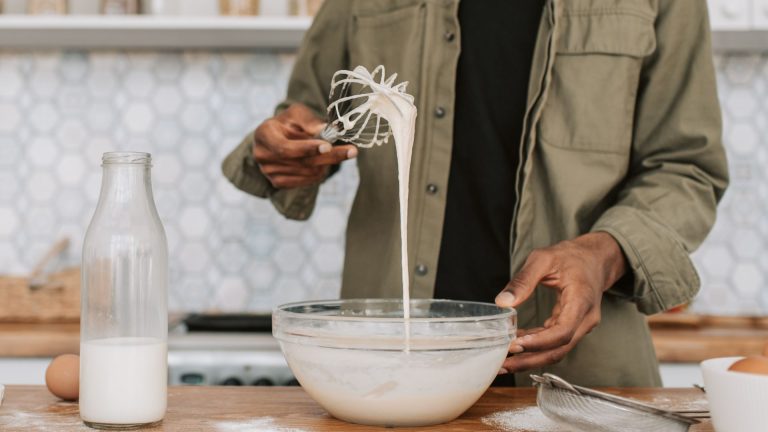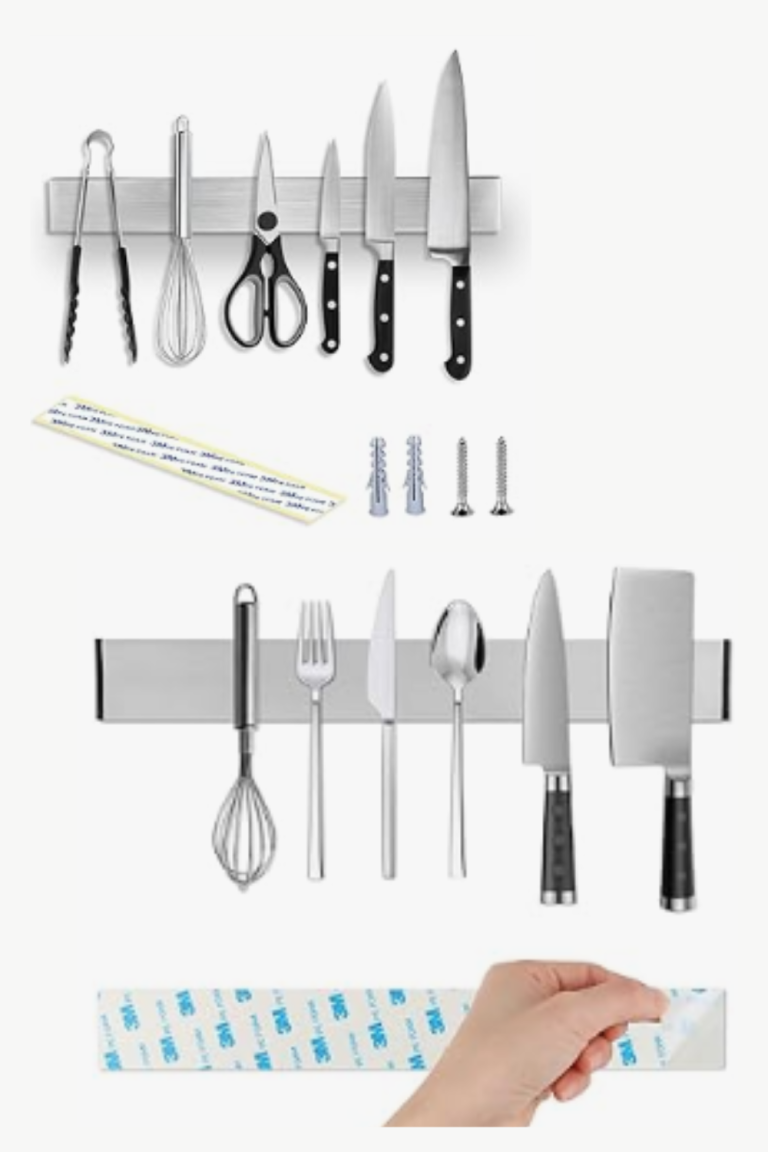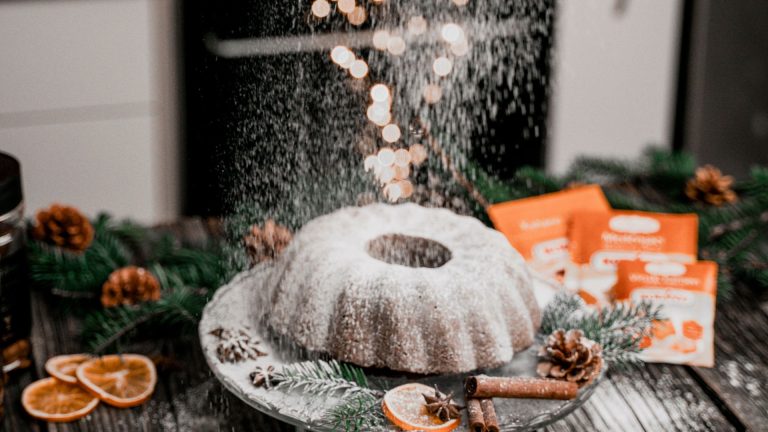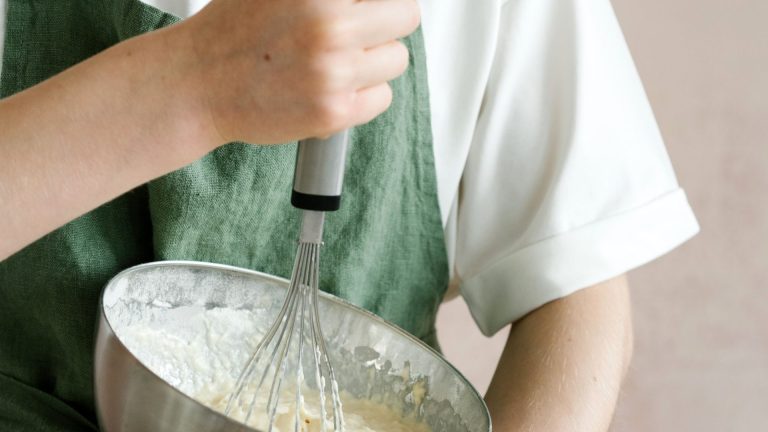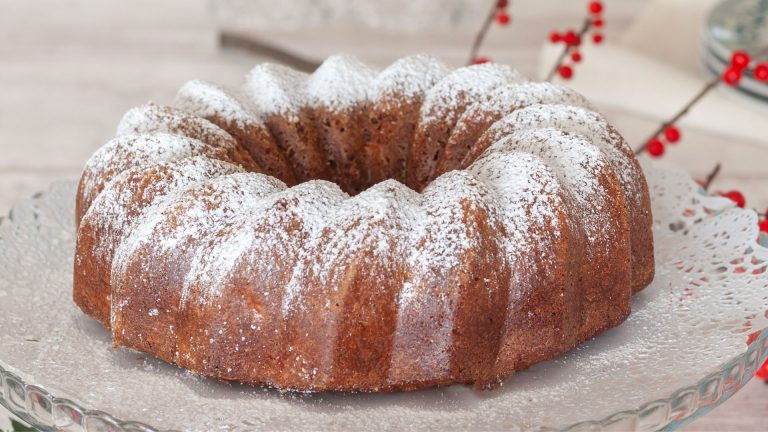SIM: Simmering role in cake making Explained
Table of Contents
ToggleWhat Is Simmering?
Simmering is a cooking technique where food is cooked gently in liquid at a temperature just below boiling. You’ll often see bubbles breaking the surface, but they’re small and gentle, not the vigorous rolling boil you might expect. Typically, simmering happens at temperatures between 180°F to 205°F (82°C to 96°C).
This method is perfect for infusing flavors, reducing liquids, and achieving a consistency that’s not possible with a higher heat. The low, steady heat helps to evenly cook the ingredients without scorching or overcooking them.== >> Check out the right cake Simmering tools and ingredients that you need here
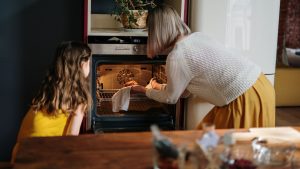
Simmering and Cake Making
When it comes to cake making, simmering might not be as straightforward as mixing ingredients and popping a cake into the oven. Instead, it plays a crucial supporting role in several cake recipes and techniques. Here’s how:
1. Making Cake Syrups
One common use of simmering in cake making is creating flavored syrups. These syrups can be used to soak layers of cake, adding moisture and flavor. For instance, if you’re making a rich, dense cake like a chocolate or a fruit cake, you might simmer sugar with water and flavorings (like vanilla or fruit juice) until it’s slightly thickened. This syrup is then brushed or soaked into the cake layers to enhance their flavor and texture.== >> Check out the right cake Simmering tools and ingredients that you need here
2. Preparing Fruit Fillings
For cakes that feature fruit fillings, simmering helps to create a smooth and flavorful filling. You might simmer fruit, sugar, and a bit of lemon juice until the mixture thickens and becomes syrupy. This method not only brings out the fruit’s natural sweetness but also helps to concentrate the flavors. The resulting filling can be used between cake layers or as a topping.
3. Making Sauces and Glazes
Simmering is also useful for making sauces and glazes that complement cakes. For example, a berry sauce or a caramel glaze often starts with simmering the ingredients until they reach the right consistency. These sauces add an extra layer of flavor and a glossy finish to your cakes.== >> Check out the right cake Simmering tools and ingredients that you need here
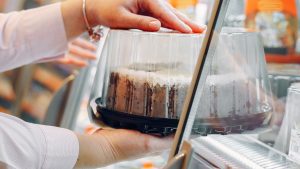
Tips for Simmering in Cake Making
- Use a Heavy-Bottomed Pan: This helps to distribute heat more evenly, preventing the mixture from scorching.
- Stir Occasionally: This ensures that the mixture cooks uniformly and reduces the risk of burning.
- Monitor the Heat: Keep the temperature low and steady. If it’s too high, you might end up boiling rather than simmering.
- Be Patient: Simmering takes time. Rushing the process can result in uneven textures and flavors.
== >> Check out the right cake Simmering tools and ingredients that you need here
Simmering vs. Boiling: Understanding the Difference
When cooking, simmering and boiling are two terms that often come up, but they are quite different techniques. Understanding their differences can help you achieve the desired texture and flavor in your dishes. Here’s a breakdown of simmering versus boiling and when to use each method.
Boiling
Boiling involves cooking food in liquid at its highest temperature, typically around 212°F (100°C) at sea level. The liquid reaches a vigorous state where large bubbles continuously rise to the surface. Boiling is often used for cooking pasta, vegetables, and meats quickly. It’s great for foods that need to be cooked through quickly or for large batches of food.
Characteristics of Boiling:
- Temperature: 212°F (100°C) or higher
- Bubbles: Rapid, large bubbles
- Heat: High
- Cooking Time: Usually shorter
When to Use Boiling:
- Pasta and Grains: To cook them thoroughly and quickly.
- Vegetables: When you want them soft or tender in a short amount of time.
- Meats: For fast cooking or making broths.== >> Check out the right cake Simmering tools and ingredients that you need here
Simmering
Simmering, on the other hand, involves cooking food at a lower temperature, typically between 180°F and 205°F (82°C to 96°C). The liquid is just below boiling, and you’ll see small, gentle bubbles breaking the surface. Simmering is a gentler method, ideal for recipes that require longer cooking times to develop flavors or for delicate ingredients that might break apart if boiled.
Characteristics of Simmering:
- Temperature: 180°F to 205°F (82°C to 96°C)
- Bubbles: Small, gentle bubbles
- Heat: Low to medium
- Cooking Time: Longer
When to Use Simmering:
- Soups and Stews: To allow flavors to meld together over a longer cooking period.
- Sauces: For reducing and thickening sauces without burning them.
- Cooking Meat: For dishes like braises where you want the meat to become tender slowly.
Key Differences
1. Temperature
- Boiling: High temperature (212°F/100°C).
- Simmering: Low to medium temperature (180°F to 205°F/82°C to 96°C).
2. Bubble Activity
- Boiling: Large, rapid bubbles.
- Simmering: Small, gentle bubbles.
3. Heat Intensity
- Boiling: High heat, which can sometimes be harsh on delicate ingredients.
- Simmering: Gentle heat, which allows for more controlled cooking.
4. Cooking Time
- Boiling: Typically faster, but can be less precise for certain recipes.
- Simmering: Takes longer, but results in more complex flavors and textures.== >> Check out the right cake Simmering tools and ingredients that you need here
How to Choose the Right Method
Choosing between simmering and boiling depends on what you’re cooking and the results you want:
- For Quick Cooking: Boiling is the go-to method. It’s ideal for foods that need to be cooked quickly and thoroughly.
- For Flavor Development: Simmering is best. It’s perfect for dishes that benefit from slow cooking and flavor development, like soups and stews.
== >> Check out the right cake Simmering tools and ingredients that you need here
Common Simmering Mistakes and How to Avoid Them
Simmering is a crucial cooking technique that requires patience and precision. While it’s straightforward, several common mistakes can compromise your results. Here’s a guide to help you avoid these pitfalls and master the art of simmering.
1. Not Maintaining the Right Temperature
One of the most frequent mistakes is failing to keep the temperature steady. Simmering should be at a temperature just below boiling, usually between 180°F and 205°F (82°C to 96°C). If the heat is too high, the liquid will start boiling instead, which can lead to burning or overcooking.
How to Avoid It:
Adjust the Heat: Use a low to medium heat setting and make adjustments as needed. A gentle, consistent bubble is what you’re aiming for.
Use a Thermometer: If precise temperature control is important, a kitchen thermometer can help you maintain the right range.== >> Check out the right cake Simmering tools and ingredients that you need here
2. Overcrowding the Pan
Adding too much food or liquid can cause the temperature to drop, leading to inconsistent cooking. When simmering, it’s important to leave enough room in the pan for heat to circulate and for the food to cook evenly.
How to Avoid It:
Cook in Batches: If you have a large quantity, simmer in smaller batches to ensure even cooking.
Choose the Right Pan: Use a pan that fits the quantity of food you’re cooking without overcrowding.
3. Neglecting to Stir
Some recipes require occasional stirring to ensure even cooking and prevent sticking or burning. Neglecting this can result in uneven textures and flavors.
How to Avoid It:
Stir Regularly: Depending on the recipe, stir occasionally to ensure even cooking and prevent sticking.
Check for Sticking: If you notice any sticking, gently scrape the bottom of the pan with a wooden spoon to release any bits.
4. Not Using Enough Liquid
Simmering often requires enough liquid to cover the ingredients, especially for dishes like soups or stews. Insufficient liquid can lead to burning and uneven cooking.
How to Avoid It:
Monitor Liquid Levels: Check periodically and add more liquid if necessary to keep the food covered.
Use the Right Amount: Follow recipe guidelines for liquid amounts and adjust as needed based on the cooking process.== >> Check out the right cake Simmering tools and ingredients that you need here
5. Simmering for Too Long or Too Short
Over-simmering can result in overly reduced liquid or overcooked ingredients, while under-simmering may not allow flavors to develop fully.
How to Avoid It:
Follow Recipe Instructions: Pay attention to recommended simmering times and adjust based on your observations.
Taste and Adjust: Taste your dish periodically and adjust cooking time or seasoning as needed.
6. Ignoring Ingredient Sizes
The size and type of ingredients can affect how they cook. Larger pieces take longer to cook and may require adjustments in simmering time.
How to Avoid It:
Cut Ingredients Evenly: Ensure that ingredients are cut to similar sizes for uniform cooking.
Adjust Cooking Time: Be prepared to adjust simmering time based on the size and type of ingredients.
7. Not Skimming the Surface
When simmering, impurities and foam can rise to the surface. Not skimming these off can lead to a cloudy or less refined final dish.
How to Avoid It:
Skim Regularly: Use a ladle or spoon to skim off any foam or impurities that rise to the surface.
Use a Fine-Mesh Strainer: For soups and stocks, strain the liquid through a fine-mesh strainer to remove any remaining bits.
Simmering vs. Sautéing: Understanding the Differences
Simmering and sautéing are two fundamental cooking techniques, each with its unique applications and benefits. Understanding their differences can help you choose the right method for your dish and achieve the best results. Let’s break down what each technique involves and when to use them.
Simmering
Simmering is a gentle cooking method where food is cooked in liquid at a temperature just below boiling, typically between 180°F and 205°F (82°C to 96°C). The liquid bubbles gently but does not reach a full boil. This method is ideal for dishes that benefit from long, slow cooking, which allows flavors to develop and ingredients to become tender.
Characteristics of Simmering:
- Temperature: 180°F to 205°F (82°C to 96°C)
- Bubbles: Small, gentle bubbles
- Heat: Low to medium
- Cooking Time: Longer
Common Uses:
- Soups and Stews: To allow flavors to meld and ingredients to become tender.
- Sauces and Gravies: For reducing and thickening without burning.
- Braised Meats: For tenderizing tough cuts of meat over time.
Sautéing
Sautéing is a cooking technique where food is cooked quickly over medium to high heat with a small amount of fat, such as oil or butter. The term “sauté” comes from the French word for “jump,” reflecting how food often moves around in the pan. This method is perfect for cooking vegetables, meat, or seafood quickly while retaining their texture and flavor.
Characteristics of Sautéing:
- Temperature: Medium to high heat
- Bubbles: Minimal, as the fat is hot but not bubbling vigorously
- Heat: High
- Cooking Time: Shorter
Common Uses:
- Vegetables: To achieve a crisp-tender texture with a caramelized surface.
- Meats: For quick searing and developing a rich, browned exterior.
- Seafood: For cooking delicate fish or shrimp quickly.== >> Check out the right cake Simmering tools and ingredients that you need here
Key Differences
1. Temperature and Heat
- Simmering: Uses low to medium heat to maintain a temperature just below boiling. This creates gentle, steady bubbles.
- Sautéing: Uses medium to high heat, which allows for rapid cooking and browning without creating large bubbles.
2. Cooking Medium
- Simmering: Involves cooking in liquid (broth, water, wine, etc.), which can be absorbed by the food or reduced to concentrate flavors.
- Sautéing: Uses a small amount of fat (oil, butter) to cook food quickly and create a caramelized or browned surface.
3. Cooking Time
- Simmering: Typically requires a longer cooking time to develop flavors and tenderize ingredients.
- Sautéing: Requires a shorter cooking time, focusing on quick cooking and texture.
4. Texture and Flavor
- Simmering: Results in a softer texture and allows flavors to meld and develop deeply. Ideal for dishes where ingredients are cooked together over a longer period.
- Sautéing: Results in a crisp-tender texture with a caramelized exterior. Ideal for quick cooking where maintaining texture and flavor contrast is important.
Choosing the Right Method
- Use Simmering When: You want to cook ingredients slowly, such as in soups, stews, or braised dishes. It’s perfect for breaking down tough meats or developing complex flavors over time.
- Use Sautéing When: You need to cook ingredients quickly while preserving their texture and flavor, such as for stir-fries, quick side dishes, or searing meats.
Simmering vs. Sautéing: Comparison Table
| Aspect | Simmering | Sautéing |
|---|---|---|
| Temperature | 180°F to 205°F (82°C to 96°C) | Medium to high heat |
| Heat Type | Low to medium heat | Medium to high heat |
| Cooking Medium | Liquid (water, broth, wine, etc.) | Small amount of fat (oil, butter, etc.) |
| Bubble Activity | Small, gentle bubbles | Minimal bubbles, mainly from fat |
| Cooking Time | Longer (minutes to hours) | Shorter (minutes) |
| Texture Result | Softer, more tender | Crisp-tender, caramelized |
| Flavor Development | Deep, melded flavors | Rich, concentrated flavors |
| Common Uses | Soups, stews, braised meats, sauces | Vegetables, meats, seafood, stir-fries |
| Best Pan Type | Heavy-bottomed, covered pan | Wide, shallow pan |
| Key Considerations | Requires patience, regular monitoring to prevent over-reduction | Requires constant attention, quick stirring to avoid burning |
Key Notes and Considerations
Simmering:
- Purpose: Ideal for breaking down tough ingredients, developing rich flavors, and creating complex, hearty dishes like stews and soups.
- Texture: Creates a tender texture by cooking ingredients slowly in liquid, which helps to soften them over time.
- Flavor: Enhances flavors as ingredients meld together and the liquid reduces to concentrate the taste.
- Time: Requires more time to achieve the desired results, often taking several hours for dishes to fully develop.
- Pan Choice: A heavy-bottomed pan is beneficial to distribute heat evenly and prevent scorching. A lid is often used to control evaporation and maintain moisture.
Sautéing:
- Purpose: Best for cooking ingredients quickly while achieving a crisp exterior and retaining a distinct texture. Ideal for vegetables, meats, and seafood.
- Texture: Provides a caramelized or browned surface while keeping the interior tender and flavorful.
- Flavor: Creates rich, complex flavors through the Maillard reaction, which adds depth to the dish.
- Time: Much quicker than simmering, often taking only a few minutes. Requires attentive cooking to prevent burning.
- Pan Choice: A wide, shallow pan (like a skillet) allows for better heat distribution and easier stirring.
== >> Check out the right cake Simmering tools and ingredients that you need here
FAQs on Simmering vs. Sautéing
1. What is the main difference between simmering and sautéing?
Answer: The main difference is in the cooking method and heat intensity. Simmering involves cooking food in liquid at a temperature just below boiling, typically between 180°F and 205°F (82°C to 96°C), which allows for gentle and slow cooking. Sautéing involves cooking food quickly in a small amount of fat over medium to high heat, which creates a caramelized or browned exterior.
2. When should I use simmering instead of sautéing?
Answer: Use simmering for dishes that require long, slow cooking to develop flavors and tenderize ingredients, such as soups, stews, and braised meats. Sautéing is best for cooking vegetables, meats, or seafood quickly while achieving a crisp-tender texture and rich, caramelized flavor.
3. Can you use the same pan for both simmering and sautéing?
Answer: While you can use a similar pan for both techniques, the type of pan and its properties can affect the results. A heavy-bottomed pan is ideal for simmering to ensure even heat distribution and prevent scorching. For sautéing, a wide, shallow pan like a skillet allows for better heat distribution and easier stirring.
4. How do I know if my dish is simmering or boiling?
Answer: If the liquid has gentle, small bubbles and is not vigorously churning, it’s simmering. If large bubbles are breaking the surface rapidly and the liquid is actively bubbling, it’s boiling.
5. Can I sauté ingredients and then simmer them?
Answer: Yes, this is a common cooking technique. You might sauté ingredients to develop flavor and color, then add liquid and simmer to cook them through and allow flavors to meld.
6. What should I do if my simmering liquid is reducing too quickly?
Answer: If the liquid is reducing too quickly, lower the heat to maintain a gentle simmer rather than a rolling boil. You can also cover the pan with a lid to slow down evaporation.
7. How can I prevent food from burning while sautéing?
Answer: To prevent burning while sautéing, use medium to high heat and keep stirring or tossing the food frequently. Ensure the pan isn’t overcrowded, which can trap steam and cause uneven cooking.
Final Words
Understanding the differences between simmering and sautéing can greatly enhance your cooking skills and the quality of your dishes. Simmering allows for slow, flavorful cooking that tenderizes ingredients and melds flavors, perfect for hearty stews and sauces. Sautéing, on the other hand, offers a quick way to cook ingredients with a caramelized exterior and crisp texture, ideal for a variety of vegetables, meats, and seafood.
By knowing when and how to use each technique, you can optimize your cooking process, achieve the best results, and make your dishes stand out. Whether you’re developing complex flavors with simmering or creating a quick, flavorful sauté, mastering these techniques will elevate your culinary creations.
Happy cooking, and enjoy experimenting with these essential techniques in your kitchen.

Hi!
I’m Mike, the creator of Forum Foodies. In my own personal experience, understanding ingredients is key to great cooking.
Forum Foodies offers guides on various ingredients, from staples to exotic finds. Join our community, share your experiences, and learn from fellow food lovers.
Have questions or suggestions? Email me at info@forumfoodies.com. Let’s embark on this delicious adventure together.
Happy cooking.
Mike/
Related Posts
- SCO: Scooping role in cake making Explained
In the world of cake making, every little detail matters. One technique that might seem…
- SLC - Slicing role in cake making Explained
When it comes to baking, the art of slicing can make or break the final…
- BRU: Bruising Role in Cake Making Explained
When it comes to baking, it’s easy to get caught up in the complexities of…
- CUT - Cutting role in cake making Explained
In this topic, I’m going to talk about the often-overlooked but crucial aspect of cake…
- TMP: Tempering Role in Cake Making Explained
In this topic, I’m going to talk about tempering, a technique that’s often overlooked but…
- BSH: Basting role in cake making Explained
In this topic, I'll talk about BSH basting and its role in cake making, sharing…
- FZ: Freezing role in cake making Explained
In this topic, I’m going to talk about the role of freezing in cake making,…
- FRY: Frying Role in Cake Making Explained
In this topic, I'm going to talk about a fascinating technique in cake making: frying.…
- GRD: Grating role in cake making Explained
When it comes to cake making, it's often the little details that make a big…
- DST: Dusting role in cake making Explained
In this topic, I’m going to talk about dusting and its crucial role in cake…
- SPN: Spoon role in cake making Explained
Hey there, cake lovers. In this topic, I'm going to talk about the humble spoon…
- PST: Pastry Role in Cake Making Explained
When it comes to baking, pastries are often thought of as their own special category,…
- SCR - Scoring Role in Cake Making Explained
When it comes to cake making, every detail matters, from the ingredients you use to…
- PSG - Pasting role in cake making Explained
In this topic, I’m going to talk about PSG (Pasting) and its crucial role in…
- BRT - Brushing role in cake making Explained
In this topic, I’m going to talk about the essential yet often overlooked technique of…

